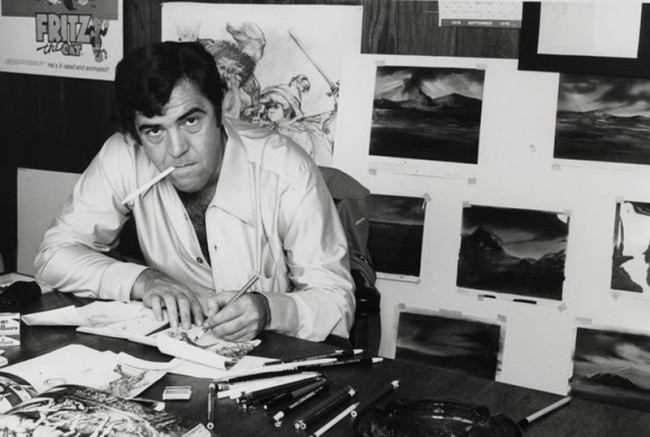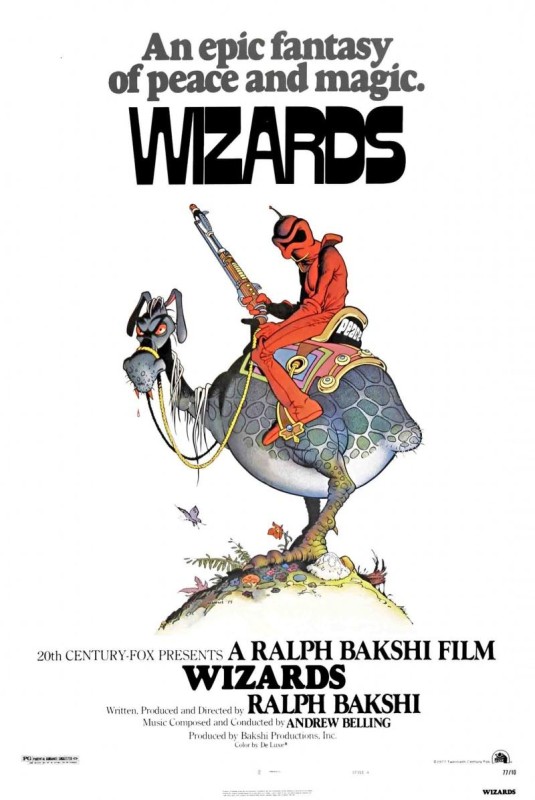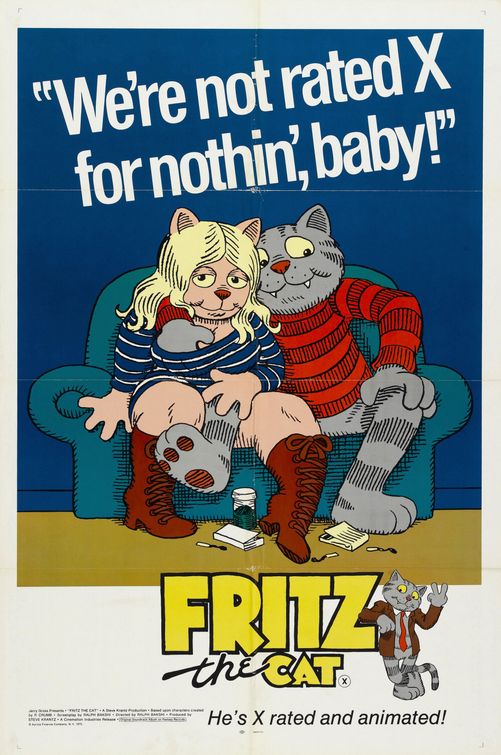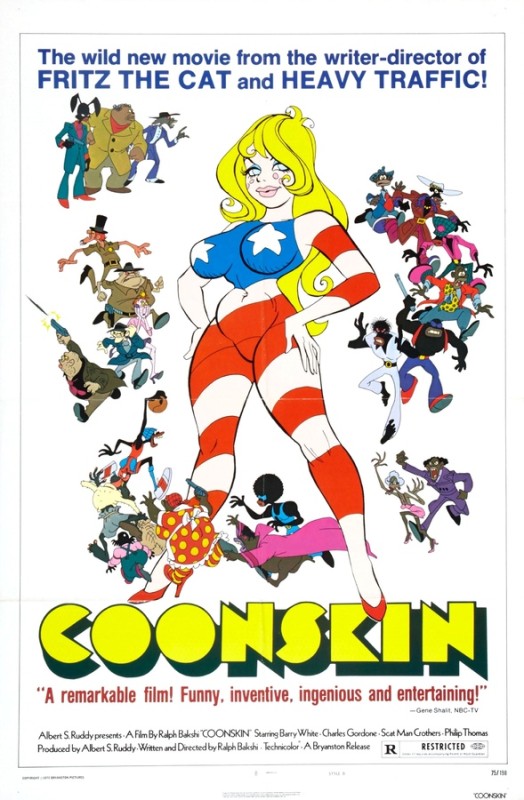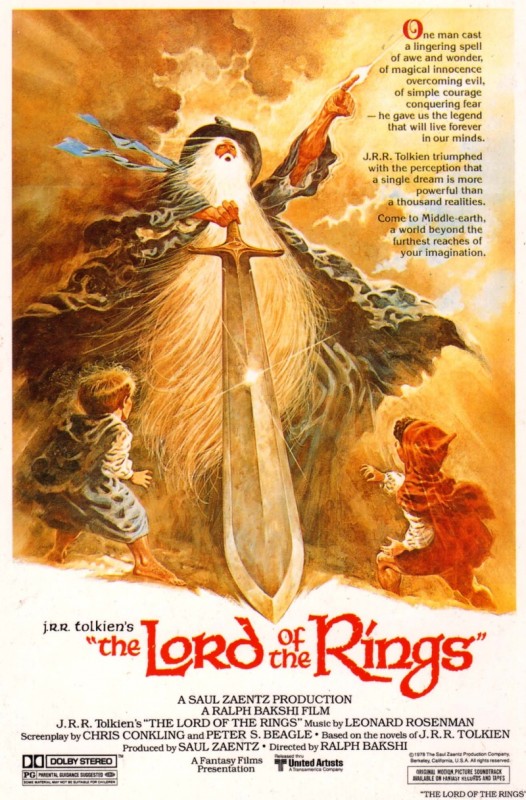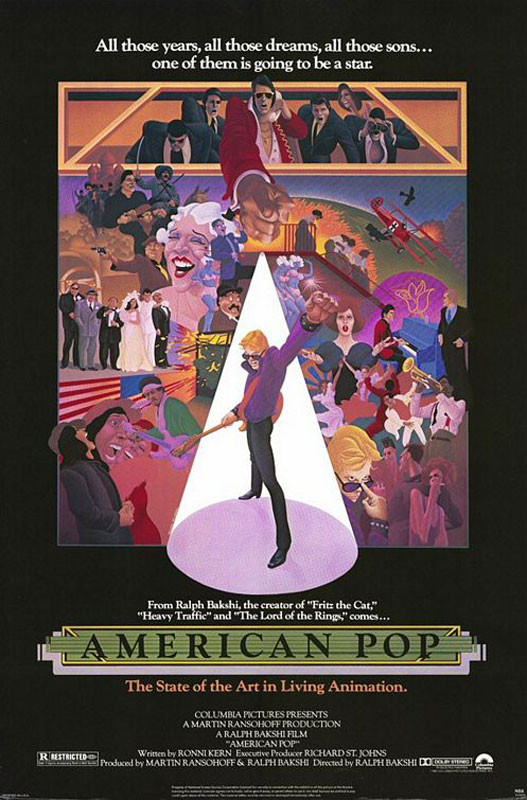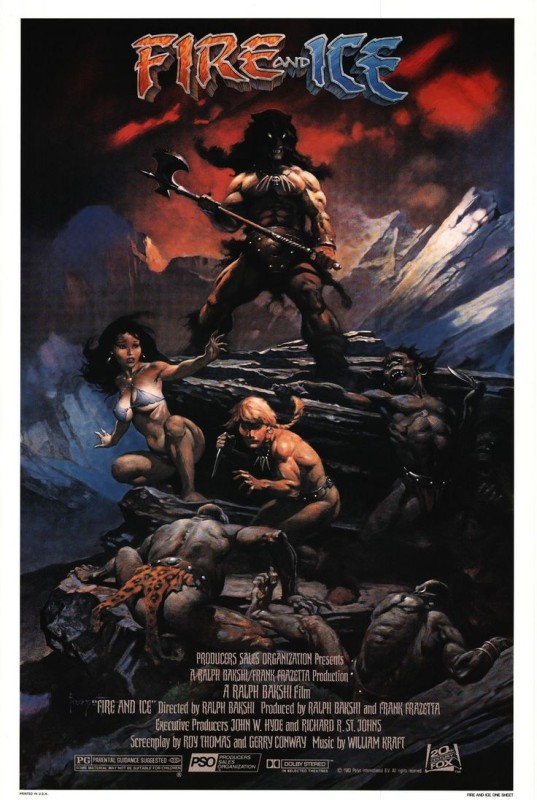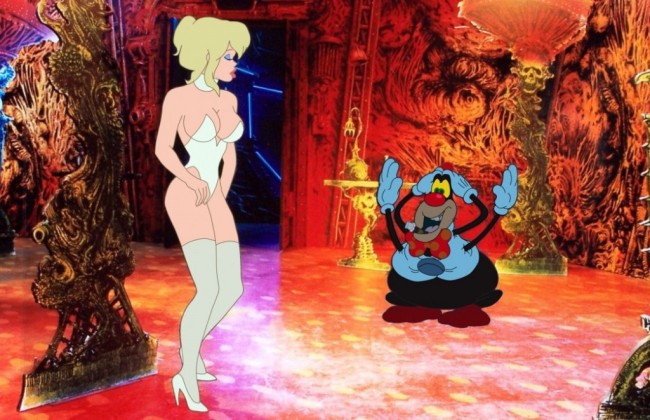By James Hancock June 25th, 2015
If I had to pick one decade as my favorite decade of movies, the 1970s is a period that is so far out in front no other era even enters the conversation. Just looking at American cinema alone we have Stanley Kubrick, Martin Scorsese, Francis Ford Coppola, Robert Altman, Orson Welles, Sam Peckinpah, Woody Allen and so many other extraordinary directors all operating at the top of their game delivering some of the most dynamic work of their careers. It was a time of radical experiments where Hollywood formulas were reinvented and in some cases obliterated and the legacy of this period continues to grow to this day. For fans of underground movies, the decade is an unlimited resource of obscure gems made by directors like Monte Hellman, Russ Meyer, & Jack Hill. But there is one director from that period who too often gets overlooked in that the path he chose was so unusual, so unconventional there was not another filmmaker alive exploring the same territory, animator Ralph Bakshi. The 1970s was a pretty dry period for animated feature films compared with the output we see today. Disney was in survival mode with movies like The Rescuers (1977) and apart from the occasional animated film from abroad like Fantastic Planet (1973) this was a tough time to be an animation fan. In spite of these headwinds, Ralph Bakshi carved out a career with a steady output of wildly original films that feature a rebellious iconoclastic spirit that make most of today’s mainstream animated films feel painfully safe and conservative by comparison. With their abundance of full frontal nudity, characters casually dropping N bombs, story lines challenging the political status quo, these films are a concentrated jolt of shock and electricity to the brain of any complacent viewer. No subject matter has ever been taboo for Ralph Bakshi. What’s so unusual about Bakshi is his versatility and breadth of work. Alive and well today, Bakshi is a storyteller who excelled at creating intoxicating fantasy adventure stories but was not content with pure escapism. Bakshi has always been determined to tackle social injustice with gritty counter culture tales from the slums of New York. Too often dismissed as a pornographer due to the adult content in many of his films, Ralph Bakshi is a trail blazer who showed a future generation of animators what the medium was capable of and single handedly reinvented the animation industry as we know it.
When I was about ten years old I had my first exposure to Ralph Bakshi. My older brother and his friends had brought home a VHS cassette for a cartoon called Street Fight aka Coonskin (1975) which they’d heard was pretty hardcore compared to the 1980s cartoons on TV we were accustomed to watching. I joined them halfway through the movie and lasted only for a few minutes before I ran for cover. There was so much violence, nudity, and harsh language in the movie I was confident we would all be punished indefinitely by my mother if we were caught watching it. Although at 10 I was already pretty used to violence and nudity in live action movies from my obsessive consumption of slasher films, it had never occurred to me that animation could be used for anything other than telling stories designed to sell me my favorite action figures. Flash forward to the summer I turned 18 and not only was I regularly experimenting with herbal jazz cigarettes as Paul McCartney likes to call them, but I was living off a steady diet of Anime classics like Vampire Hunter D (1985) and Akira (1988). After I had exhausted most of these Japanese options at my local video store, I took a chance on a random cartoon that had an unusual cover that didn’t look like any animation I had ever seen before. The film was Wizards (1977) by Ralph Bakshi and my love affair with his movies was officially underway.
For those of you who are unfamiliar with his work, Ralph Bakshi had an interesting childhood, one that would heavily influence and inform his future subject matter. Born in Palestine in 1938, Bakshi’s family moved to Brooklyn, NY when he was a small child where he fell in love with comic books, often digging them out of the trash. When Bakshi was only 9, his family moved to a predominantly black neighborhood in Washington, DC. Racial segregation was still in place but the Bakshi household was several miles away from the closest white school. Bakshi’s parents decided to enroll Ralph in the local black school where Bakshi was quite happy. Bakshi never felt out of place due to race until the police decided to step in and bar Ralph from the school he was attending. Bakshi’s family eventually moved back to New York where he fell in love with cartooning. In the late Sixties, Bakshi founded his own studio Bakshi Productions and for the next 15 years, Ralph Bakshi would make some of the most original and groundbreaking animated films ever made. I’m not going to cover everything in Bakshi’s filmograpahy but I do want to highlight some of my personal favorites.
Spider-Man (1967 TV Series)
Bakshi does not have much of a personal footprint on this show from a creative standpoint but it is notable in Bakshi’s career in that he served as producer on 25 episodes. During this time Bakshi also built a reputation for paying higher salaries than most studios in addition to increasing opportunities for women and minorities in the animation industry.
Fritz the Cat (1972)
Based on a character created by comic book legend Robert Crumb, the film Fritz the Cat apparently disappointed Crumb so completely he decided to kill off the character for good. Whatever Crumb’s personal misgivings about the film might have been, to this day Fritz the Cat remains the most successful independent animated film ever made. With its candid look at drug use, orgies, and other forbidden behavior, the film received an X-rating which was immediately used to exploit the film theatrically. Audiences lined up in droves to see what the controversy was all about and Bakshi’s career as a bankable filmmaker was officially underway.
Coonskin (1975)
Bakshi followed up the release of Fritz the Cat with Heavy Traffic (1973), a film that combined animation with live action and gave Bakshi the chance to tell an original story about the life of a cartoonist in the inner city. The film was the perfect warm-up for one of the best movies Bakshi ever made, Coonskin. The film stars Barry White and Scatman Crothers and tells the story of a gangster’s rise to power in Harlem as he goes to war with corrupt cops and the Mafia. Once again the film combines live action footage (shot by the amazing DP William Fraker) with animation and the end result is a film that feels like a cross between Quentin Tarantino and Who Framed Roger Rabbit (1988). Fans of classic blaxploitation films like The Mack (1973) will be absolutely blown away by this movie.
Wizards (1977)
Finally we come to my favorite movie by Ralph Bakshi, Wizards. This is the one film of Bakshi’s where all of his strengths as a storyteller as well as his political preoccupations perfectly dovetail together into a remarkable epic. The film takes place in the distant future, several thousand years after a nuclear holocaust, when the forces of magic have reasserted control over the world. The story follows the strife between two brothers, both wizards, one of whom seeks to use the rediscovered weapons and propaganda of Nazi Germany to conquer the world. What’s amazing about the movie is how it integrates the innocence and allure of fairy tales with the horrors of 20th century warfare. The movie is essentially a movie for children, but one that refuses to condescend to a childlike sensibility but instead offers a cautionary tale about fascism. There’s never been another movie like it. Of all the animated films I have seen that take place in a fantasy setting, Wizards is by far the most impressive. The music alone will haunt you for the rest of your life.
The Lord of the Rings (1978)
Many years before Peter Jackson brought Middle Earth to life, Ralph Bakshi had the first turn at bat in adapating J.R.R. Tolkien’s masterpiece to the screen. The film only covers the first half of the story, and in spite of grossing $30 million with a budget $4 million, the plans for the sequel were unfortunately scrapped. One interesting technical note is the extensive use of the rotoscoping technique used in this film which Bakshi would continue to use in his feature films in the future. The Lord of the Rings is admittedly a flawed film, however, the film features several sequences that I vastly prefer to Peter Jackson’s interpretation of the material, in particular those scenes that take place in the Mines of Moria. My two favorite chapters in the history of fantasy literature are ‘A Journey in the Dark’ and ‘The Bridge of Khazad-Dum’ from The Fellowship of the Ring and Bakshi’s approach to these scenes gives me goose bumps to this day.
American Pop (1981)
After the troubles involved with The Lord of the Rings, Bakshi took a break from fantasy with a much more personal story, American Pop, an amazing film that celebrates the best in American popular music. The story unfolds from the perspective of four generations of a family that immigrates to New York from Russia in the late 1890’s. From performing for the troops in WWI through the high water mark of the Swing era to the psychedelic rock of the 1960s, the trials and tribulations of this one family manage to summarize everything incredible that I love about 20th century music. Issues with the music rights unfortunately kept this film out of circulation for many years until 1998 when I was lucky enough to discover the movie on DVD. Sad but inspiring, I’d argue that this is most emotionally moving film of Bakshi’s career.
Fire and Ice (1983)
At last we come to the movie that separates the men from the boys when it comes to enjoying hardcore adult fantasy stories. For this film Bakshi collaborated with legendary fantasy illustrator Frank Frazetta and the result is an erotic, action-driven fantasy epic that feels exactly like one of Frazetta’s paintings come to life. This movie is a rare treat for Frazetta fans and would make a perfect companion piece on a double bill with Conan the Barbarian (1982, John Milius).
After Fire and Ice, Bakshi flirted with a lot of different projects such as Fear and Loathing in Las Vegas, but he took a small hiatus to focus on painting as well as some television work like Mighty Mouse. Bakshi’s return to feature filmmaking, Cool World (1992), was sadly a really negative experience for him where the screenplay was rewritten against his will and he was then threatened with a lawsuit if he did not finish the film. The movie has its moments, in particular some incredibly erotic scenes featuring the character Holli Would, but the final movie does not measure up well against Bakshi’s other movies. After Cool World Bakshi returned to his painting as well as teaching. In recent years, Bakshi launched a successful Kickstarter campaign for a new animated project, Last Days of Coney Island but no release date is yet in sight.
If you’ve never watched any of Ralph Bakshi’s films before, you’re in for a special treat. There’s never been another animator like him before or since. Not every film of his is perfect from start to finish. At times, Bakshi’s style of personal storytelling can be downright incoherent or worse heavy-handed especially when the films overtly tackle political themes. That said, I’ll take the films of Ralph Bakshi over the vast majority of any animation being done in film or in television today. The best of his work is intensely personal and stylistically unique. While writing this post I watched Coonskin and American Pop and I couldn’t help myself as I repeatedly shouted with glee every expletive I could think of just out of admiration for what I was seeing. It really is amazing how much great stuff Bakshi made in a relatively short period of time. Every edgy animated filmmaker working today from Bill Plympton to Trey Parker and Matt Stone owes Bakshi a huge debt for opening up audience’s palettes to different styles of storytelling in animation. So if you’re tired of mainstream animation and the endless scenes of singing princesses and cute talking animals, dust off some of Bakshi’s classic movies and brace yourself for a viewing experience unlike any you’ve had before.
I am one of the Co-Hosts of Wrong Reel and you can find our content here:


